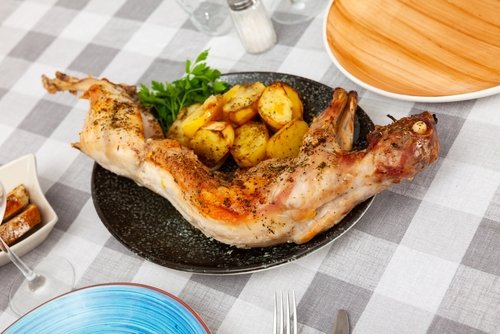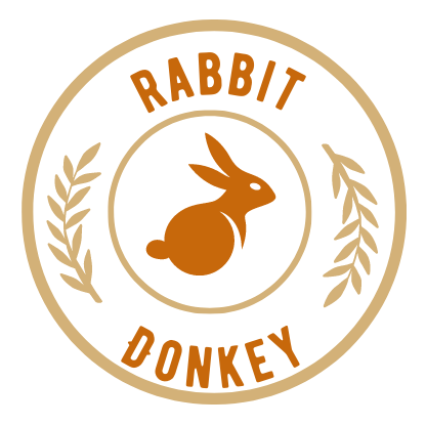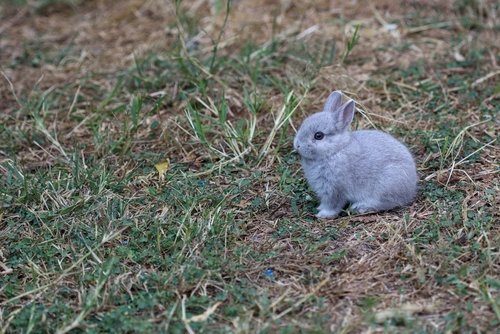Learn How To Cook Rabbit Like A Pro Now
Rabbit has been a staple in culinary traditions around the world for centuries. From ancient times to the present day, this lean and flavorful meat has found its way into diverse cuisines. In this blog, we will cover how to cook rabbit.
The history of rabbit as a culinary ingredient dates back to the Romans, who first domesticated rabbits for their meat. They recognized the versatility and nutritional value of rabbit meat, using it in various dishes and even as offerings during religious ceremonies.
Over time, the rabbit became popular among cultures, including the French, Italians, and Spanish, who incorporated it into their traditional recipes. Today, rabbit is enjoyed globally and celebrated for its delicate flavor and tender texture.
Health Benefits and Nutritional Value of Rabbit Meat
Not only is rabbit delicious, but it also boasts numerous health benefits. Rabbit meat is exceptionally lean compared to other meats like beef or pork. It is low in fat content and cholesterol while high in protein, making it an excellent choice for those seeking a healthy alternative to red meats.
Additionally, rabbit meat contains essential nutrients such as iron, zinc, phosphorus, and B vitamins like niacin and vitamin B12. These nutrients contribute to muscle development, promote a healthy nervous system function, support metabolism regulation, and aid in red blood cell production.
Moreover, due to its low-calorie content per serving size compared to other meats, rabbit can be an ideal choice for individuals watching their calorie intake or looking to maintain a balanced diet. With this knowledge about the historical significance of rabbits in culinary arts as well as their nutritional value established within our minds, let us now delve deeper into how we can choose fresh rabbit meat that will yield delicious results when cooked, along with some mouthwatering recipes showcasing these tender creatures’ true potential on our platters!
Preparing the Rabbit for Cooking
Selecting a fresh and high-quality rabbit
When cooking rabbits, the first step is to ensure you have a fresh and high-quality rabbit. Look for rabbits that have firm flesh and a pleasant, mild aroma. Avoid rabbits with any signs of discoloration or a strong, unpleasant smell.
If possible, opt for locally sourced or organic rabbits that are raised in humane conditions. This not only ensures better taste but also supports sustainable farming practices.
Cleaning and dressing the rabbit properly
Before diving into your delicious rabbit recipes, it’s necessary to clean and dress the rabbit properly. Start by rinsing the rabbit under cold running water to remove any surface dirt or debris. Pat it dry with paper towels before proceeding.
Next, carefully remove entrails from the body cavity using a sharp knife or kitchen shears. Be thorough but gentle to avoid damaging the meat.
Removing any excess fat or undesirable parts
To ensure your cooked rabbit meat is lean and succulent, it’s important to trim away any excess fat before cooking. Fat can contribute an unwanted greasiness to the dish and may affect its flavor. Using a sharp knife, carefully trim off visible fat from both the exterior of the rabbit as well as any fatty deposits within the cavity area.
By taking these steps in preparing your rabbit for cooking, you are setting yourself up for success in creating delicious meals with this versatile meat. Now that you have learned how to choose and store rabbit meat correctly let’s dive into different cooking methods and explore some mouthwatering recipes!
Basic Cooking Methods for Rabbit
Roasting: Tips for achieving a crispy and succulent roasted rabbit
Roasting is a fantastic way to bring out the natural flavors of rabbit meat while giving it a crispy exterior. To ensure your roasted rabbit is tender and succulent, preheat the oven to around 375°F (190°C). Season the rabbit generously with salt, pepper, and other preferred spices like thyme or garlic powder.
For added flavor combinations, consider stuffing the cavity of the rabbit with aromatic ingredients such as lemon slices, rosemary sprigs, or even diced apples. Place the seasoned rabbit on a roasting rack in a baking dish and cover loosely with aluminum foil.
Roast for approximately 25-30 minutes per pound of meat, removing the foil during the last 15 minutes to allow for browning. Remember to baste the rabbit occasionally during cooking to keep it moist.
Braising: Creating tender and flavorful braised rabbit dishes
Braising is an excellent technique for preparing rabbits that results in incredibly tender and flavorful meat. The key lies in choosing the right braising liquid to infuse additional taste into the dish. Traditional options include chicken or vegetable broth, red or white wine, or even a combination of both.
Once your liquid is ready, heat some oil in a heavy-bottomed pot over medium-high heat and brown the seasoned rabbit pieces on all sides. Next, add your chosen braising liquid and any desired aromatics like onions, carrots, celery, garlic cloves, or herbs such as bay leaves and thyme sprigs.
Reduce heat to low and cover tightly with a lid. Allow it to simmer gently for 1-2 hours until the meat becomes fork-tender.
Grilling: Adding smoky flavors to your rabbit meat
Grilling rabbit can yield a delightful smoky flavor that complements the natural richness of the meat. To enhance taste, marinating the rabbit before grilling is highly recommended.
You can create a marinade using ingredients like olive oil, lemon juice, minced garlic, chopped herbs such as rosemary or thyme, and honey or Dijon mustard for sweetness and tanginess. Place the rabbit pieces in the marinade and let them rest for at least 2 hours or overnight in the refrigerator.
When ready to grill, preheat your grill to medium-high heat and lightly oil the grates to prevent sticking. Cook the marinated rabbit over direct heat for about 6-8 minutes per side or until it reaches an internal temperature of 160°F (71°C).
Monitor carefully, as rabbit meat can easily dry out if overcooked. By mastering these cooking methods—roasting, braising, and grilling—you’ll be well on your way to preparing delicious rabbit dishes that will leave your taste buds begging for more!

Delicious Rabbit Recipes from Around the World
French Cuisine: Coq au Vin-style braised rabbit with red wine
Regarding rabbit recipes, the French have perfected the art of transforming this humble meat into a culinary masterpiece. Coq au Vin, a beloved French dish traditionally made with chicken, can be easily adapted to feature succulent braised rabbit with a rich red wine sauce.
To create this delectable dish, marinate the rabbit pieces in red wine, along with aromatic ingredients such as garlic, onions, thyme, and bay leaves, for several hours or overnight. Once marinated, remove the rabbit from the marinade and pat it dry.
In a large skillet or Dutch oven, heat some olive oil and brown the rabbit pieces on all sides until they develop a lovely golden crust. Once browned, remove the rabbit from the pan and set it aside.
In that same pan, sauté onions and garlic until fragrant before adding back in the browned rabbit. Pour in some of that flavorful marinade along with additional red wine and chicken broth to create a luscious braising liquid.
Cover the pan and let it simmer gently for about an hour or until the meat is tender enough to fall off the bone effortlessly. The slow cooking ensures that each bite is infused with aromatic flavors while keeping the meat moist and juicy.
When serving this exquisite dish, consider pairing it with creamy mashed potatoes or buttered noodles to soak up every last drop of that velvety sauce. Garnish your plate with fresh parsley for added color and freshness.
Italian Cuisine: Tuscan-style roasted rabbit with rosemary
Transport your taste buds to Tuscany with this scrumptious Italian-style roasted rabbit, elevated with the enchanting aroma of rosemary.
Italian cuisine celebrates simplicity and emphasizes the natural flavors of ingredients, making this recipe a delightful showcase for rabbit meat. In Tuscany, regional variations in the seasoning and cooking methods add depth to this dish.
To prepare it, preheat your oven to 350°F (175°C). Season the rabbit generously with salt and pepper before rubbing it with olive oil to enhance its juiciness.
Next, place a few sprigs of fresh rosemary on top of each rabbit piece to infuse it with that distinctive herbal essence. The scent alone will make your kitchen feel like an idyllic Tuscan countryside.
Arrange the seasoned rabbit pieces in a roasting pan and surround them with vegetables, such as carrots, potatoes, or onions. The vegetables will soak up the savory juices released from the rabbit during cooking, creating a delicious medley of flavors.
Roast the rabbit for about 40-50 minutes or until it reaches an internal temperature between 160-165°F (71-74°C), ensuring it remains tender and juicy. Baste occasionally with pan juices during cooking to further enhance its juiciness.
To complete this Italian masterpiece on a plate, serve your roasted rabbit alongside creamy polenta or a side dish of roasted vegetables drizzled with olive oil and sprinkled with sea salt. The delicate flavors and rustic charm will transport you to Tuscany’s picturesque hillsides.
Lesser-known Rabbit Dishes Worth Trying
Moroccan Cuisine: Moroccan-spiced grilled rabbit skewers
When it comes to exploring the exotic flavors of Moroccan cuisine, grilled rabbit skewers are a delightful choice. These succulent and aromatic skewers showcase the unique spice blends that define Moroccan cooking. The key to achieving a mouthwatering taste lies in the perfect combination of spices like cumin, coriander, paprika, cinnamon, and ginger.
Marinating the rabbit meat in a mixture of these spices, olive oil, lemon juice, and garlic infuses it with a burst of flavors. Grilling the skewers over charcoal or open flame adds a smoky touch that perfectly complements the spices.
Unique spice blends used in Moroccan cuisine
Moroccan cuisine is renowned for its exquisite spice blends known as “ras el hanout.” This complex mixture typically includes a harmonious blend of cinnamon, cumin, coriander, ginger, turmeric, cardamom, nutmeg, cloves, and black pepper. Each blend can vary slightly depending on personal preference or regional tradition. The distinct combination of sweet and savory flavors from these spices creates an enchanting taste profile that enhances the natural richness of rabbit meat.
Traditional side dishes like couscous or tabbouleh
To complete your Moroccan-inspired meal featuring grilled rabbit skewers packed with fragrant spices, consider serving traditional side dishes like couscous or tabbouleh. Couscous is a versatile grain dish made from semolina wheat that offers a light texture and mild flavor that pairs well with the boldness of the spiced rabbit skewers.
Tabbouleh is a refreshing salad made from bulgur wheat mixed with parsley, mint leaves, tomatoes, and cucumber dice tossed in lemon juice and olive oil dressing. Its vibrant flavors and herbaceous notes provide a cool and refreshing contrast to the warm and spiced rabbit skewers.
Conclusion
Exploring the world of rabbit recipes opens up a universe of culinary possibilities. From classic preparations like roasting and braising to lesser-known delights such as Moroccan-spiced grilled rabbit skewers, there are endless ways to enjoy this lean and nutritious meat. Don’t be afraid to experiment with different cooking techniques, seasonings, and traditional side dishes to create unique flavor combinations that suit your taste buds.
With its versatility and delicate flavor, rabbit meat can bring an exciting twist to your dining experience. So embrace your culinary curiosity, learn how to cook rabbit meat confidently, and embark on a flavorful journey that will leave you craving more delicious bunny delicacies!




